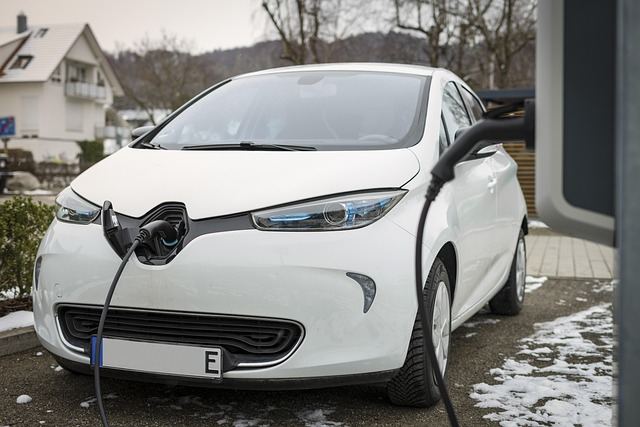How Much Does Binance Charge for Futures Trading in 2025: Complete Fee Guide
Author: Jameson Richman Expert
Published On: 2025-10-23
Prepared by Jameson Richman and our team of experts with over a decade of experience in cryptocurrency and digital asset analysis. Learn more about us.
How much does Binance charge for futures trading is one of the first questions traders ask before opening leverage positions. This comprehensive 2025 guide breaks down Binance Futures fees—including maker/taker charges, funding rates, liquidation fees, VIP discounts, BNB fee discounts, and actionable techniques to lower costs. You’ll also find practical examples, links to official fee pages and high-authority resources, and curated further reading that explains rebates and volume significance to help you optimize trading costs.

Quick summary: what you’ll learn
- What Binance charges for futures trading (structure and components)
- How maker and taker fees work and how to calculate your cost
- Funding rate mechanics for perpetual contracts and how that affects PnL
- VIP tiers, fee discounts, BNB fee payment benefits, and rebate vouchers
- Practical examples and strategies to reduce fees
- Where to verify the latest official rates and recommended further reading
Overview: Binance Futures fee components
Binance Futures trading fees are composed of several distinct items. Understanding each lets you estimate total trading costs accurately:
- Maker fee — charged (or sometimes rewarded) when you place an order that provides liquidity (limit orders posted to the order book).
- Taker fee — charged when you remove liquidity by filling existing orders (market orders or taker limit orders).
- Funding payments — periodic transfers between long and short positions for perpetual swap contracts; not technically an exchange fee but a real cost or income.
- Liquidation fee — charged when a leveraged position is forcibly closed by the system to prevent negative account balances.
- Conversion/withdrawal fees — converting between margin currencies or withdrawing funds can incur costs (varies by asset).
Types of futures on Binance
Binance offers multiple futures products. Fees and mechanics can differ across these:
- USDT-Margined Perpetual and Quarterly Contracts (USDⓈ-M) — margined and settled in stablecoins such as USDT or BUSD.
- Coin-Margined Futures (COIN-M) — margined and settled in the underlying cryptocurrency (e.g., BTC, ETH).
- Leveraged tokens and other derivatives — different fee schedules and operational rules.
Maker vs. Taker: the core fee difference
Mistakenly assuming all trades cost the same is common. Maker/taker classification matters because makers often pay lower fees (or receive rebates) while takers pay more for immediate execution.
How maker/taker fees are charged
- When you place a limit order that does not immediately match existing orders, your order sits on the order book — you are a maker.
- If your order immediately matches existing liquidity (e.g., a market order or an aggressive limit order), you are a taker.
- Binance charges different rates for makers and takers. These vary by product (USDⓈ-M vs COIN-M), by VIP tier (determined by 30-day trading volume and BNB balance), and by promotions.
Because Binance updates tiers and special offers periodically, the most reliable place for current rates is Binance’s official fee page. See Binance’s Futures fee and margin page for official, up-to-date details: Binance Futures fee schedule.

Funding rates: recurring cost or income for perpetuals
Perpetual futures don’t settle daily; instead they use a funding mechanism to tether contract prices to spot prices. Funding payments occur at set intervals (e.g., every 8 hours) and are exchanged peer-to-peer between longs and shorts.
Key points:
- Funding can be positive or negative: when funding is positive, longs pay shorts; when negative, shorts pay longs.
- Funding depends on index price vs mark price and market interest, not directly on Binance’s exchange fees.
- Large funding payments over time can significantly affect profitability—especially for high-leverage, long-duration positions.
To learn the mechanics and how perpetual swaps work in depth, see this Investopedia overview on perpetual swaps and futures: Futures contract (Wikipedia) and Investopedia’s perpetual swap guide for funding mechanics: Investopedia - Perpetual Swap.
VIP tiers, BNB discounts, and rebate vouchers
Binance incentivizes high-volume traders and BNB holders through tiered VIP discounts and fee reduction programs. Key levers to reduce fees:
- VIP levels — higher 30-day futures trading volume and larger BNB holdings move you to lower fee tiers.
- Paying fees with BNB — using BNB to pay trading fees typically gives an automatic percentage discount.
- Fee rebate vouchers and promotions — Binance periodically issues vouchers and discounts; these can be stackable with other discounts during promotions.
For an in-depth look at Binance trading fee rebate vouchers and how they can reduce costs in 2025, refer to this analysis: Trading Fee Rebate Voucher — 2025 Analysis.
How to calculate how much Binance charges for futures trading
There isn’t a single fee figure to quote because costs depend on your order type, VIP tier, whether you’re long or short (for funding), and contract type. Here’s a step-by-step method to calculate your expected cost for a trade:
- Identify your fee rate — check the maker and taker rates for your account tier and product (USDⓈ-M or COIN-M) on Binance’s official fee page.
- Compute execution fee — Order execution fee = notional value of executed trade × fee rate.
Example formula: Fee = Order Notional × Fee Rate.
If you open a $10,000 position and taker fee = 0.04% (0.0004), then fee = $10,000 × 0.0004 = $4. - Estimate funding payments — Funding amount = Position Notional × Funding Rate (paid or received at each funding interval). Funding rates fluctuate; check the contract’s funding history to estimate expected cost.
- Include potential liquidation fee — If your position is liquidated, a liquidation fee / insurance fund cost may apply. This is typically a percentage of the remaining margin or position notional in extreme cases.
- Sum up — Total cost = Execution fees (open + close) + Net funding payments + Possible liquidation/other fees.
Hypothetical example:
- Open a 10 BTC position with notional USD value = $200,000 (price $20,000 per BTC) using 10× leverage → required margin $20,000.
- Assume taker fee = 0.04% and maker fee = 0.02% (illustrative only — check live rates).
- Open (taker) fee = $200,000 × 0.0004 = $80. Close (taker) fee = $200,000 × 0.0004 = $80. Total execution fee = $160.
- If average funding rate over your holding period is 0.01% per funding interval and there are 3 funding intervals, funding paid = $200,000 × 0.0001 × 3 = $60 (paid or received depending on position side).
- So approximate total cost = $160 + $60 = $220 (excluding potential liquidation or conversion fees).
Note: The numbers above are illustrative. Always verify live fee rates and funding rate history before trading. See Binance official fees: Binance Futures fees.

Where fees vary and why you might pay more or less
Factors that influence the fee you pay:
- Trading volume (30-day) — higher volume reduces maker/taker rates via VIP tiers.
- BNB balance — holding and using BNB to pay fees often yields discounts.
- Order type — using limit maker orders is usually cheaper than market/taker orders.
- Contract type — COIN-M vs USDⓈ-M may have different fee structures.
- Promotions and vouchers — time-limited promotions or vouchers (like rebate vouchers) can cut fees significantly.
Practical ways to reduce Binance futures trading fees
Reducing fees is mostly about strategic behavior and account setup. Here are proven tactics:
- Place maker orders — use limit orders that add liquidity to receive lower maker fees (sometimes rebates).
- Increase volume strategically — for active traders, consolidating volume across a single account helps reach VIP tiers which reduce fees. For details on how trading volume affects rewards and competitiveness, see this discussion on trading volume significance: What is trading volume in Binance — significance.
- Pay with BNB — enable BNB as fee payment to receive a discount.
- Use fee vouchers wisely — when available, apply rebate vouchers described in the Binance voucher analysis: Binance fee rebate voucher analysis.
- Time entries to avoid adverse funding — review funding rate history so you don’t hold a position across a high funding payment if you’re on the paying side.
- Compare exchanges — fees vary by exchange; consider where your strategy fits best. (See referral links to alternative platforms at the end of this article.)
Other cost considerations and hidden fees
In addition to stated maker/taker and funding fees, consider the following:
- Slippage — market orders can incur hidden cost through price slippage; using limit orders reduces slippage risk.
- Partial fills and cancellations — some order workflows can lead to extra complexity in fee calculation; check order confirmation for exact charged fees.
- Tax and reporting costs — realized PnL and fees affect taxable gains/losses; consult tax advisors or local revenue guidance for reporting.
- Counterparty and settlement risk — while not a fee, margin calls and forced liquidations can impose economic loss beyond trading fees.

Example scenarios: how fees affect strategies
1) High-frequency maker strategy
If you are a high-frequency trader who primarily posts limit orders and consistently qualifies as a maker, your average fee might be very low or even net positive if maker rebates exist for your VIP tier. Over thousands of small trades, narrow spreads matter more than nominal fee rates.
2) Swing trader using perpetuals
Swing traders holding leveraged positions for days should compare execution fees vs cumulative funding payments. A low nominal fee can be outweighed by repeated positive funding payments if the market is in one-sided sentiment.
3) Scalper using market orders
Scalpers who prioritize immediate fills will pay higher taker fees and suffer slippage; the key is to ensure per-trade edge > execution + funding cost. Small-percentage differences in fee rates can determine profitability for micro-scalping strategies.
How to verify the latest Binance futures fees (and why you should)
Because fees and promotions change, always verify live rates before trading. Useful authoritative links:
- Binance official futures fee page: Binance Futures Fee Schedule
- Binance Help Center for funding rates and contract details: Binance Support
- Futures/derivatives glossary on Wikipedia: Futures contract (Wikipedia)
Tools and tactics to estimate fees before executing
Before trading, use these practical tools and checks:
- Open the Binance futures order ticket — Binance displays the estimated fees for your order before submission.
- Use the fee calculator on Binance fee pages or third-party portfolio trackers that factor in maker/taker and funding history.
- Check the contract’s recent funding rate history to estimate expected funding payments for your intended holding period.
- Simulate trades in small sizes to observe real-world slippage and actual fee debits.

Risk and fee management checklist
- Prefer maker orders whenever latency/market conditions allow.
- Set alerts for funding rate spikes or index price divergence to avoid unexpected funding costs.
- Review VIP tier requirements and calculate if reaching a higher tier is cost-effective given your trading volume.
- Keep a portion of BNB available if you rely on BNB discounts—monitor volatility that could reduce BNB discount value versus fee savings.
Further reading and resources
To deepen your trading strategy and automation knowledge, check these curated resources:
- Comprehensive analysis of automated trading tools and how bots perform in crypto markets: Does an AI trading bot really work? — In-depth analysis.
- A practical look at the significance of trading volume on Binance (helps with VIP decisions and fee planning): Trading volume in Binance — significance.
- For researching crypto price forecasts and long-term signals to pair with futures strategies: Best cryptocurrency price prediction websites in 2025.
- Analysis of Binance fee rebate vouchers and how vouchers can reduce your futures trading costs: Trading Fee Rebate Voucher — 2025 Analysis.
Comparing Binance fees with other derivatives exchanges
While Binance is one of the largest and most liquid futures venues, other exchanges can be competitive on fee structure or offer different promotional incentives. If you’re comparing platforms, consider total cost of ownership (execution fees + funding + slippage + withdrawal/transfer costs + liquidity):
- MEXC — competitive fee structure for derivatives and frequent promotions: Register with MEXC
- Bitget — known for deep liquidity and referral promos: Register with Bitget
- Bybit — popular derivatives platform with competitive VIP and maker/taker schedules: Register with Bybit
- Binance — register here to access Binance services (affiliate referral): Register with Binance

Final tips: How to make fee decisions that align with your strategy
- If your edge is small per trade (scalping), fees and slippage are critical—optimize for maker orders and venues with the lowest taker fees you’ll actually pay.
- If you hold positions longer, prioritize funding history and expected directional funding payments over marginal differences in maker/taker fees.
- Track your realized trading costs monthly (execution + funding + withdrawals) and benchmark against profits to see if fee reduction measures are worth the operational tradeoffs (e.g., altered order types or routing).
- Use demos or small-size real trades to validate assumptions about liquidity and fee impact in live markets.
Conclusion
So, how much does Binance charge for futures trading? There’s no single number. Your effective cost depends on the product (USDⓈ-M vs COIN-M), order type (maker vs taker), VIP tier, BNB discounts, funding payments, and whether you experience slippage or liquidation events. Use the method described in this guide to compute expected fees before trading, confirm real-time rates on Binance’s official fee page (Binance Futures fees), and apply the fee-reduction tactics (maker orders, VIP planning, BNB payment, and vouchers) to optimize outcomes.
For related tools, automation insights, and fee voucher strategies that can meaningfully cut your futures costs in 2025, review these deeper articles: AI trading bot analysis, fee rebate voucher guide, and trading volume significance.
If you’re considering multi-exchange strategies or want to try alternatives while evaluating fees and liquidity, here are sign-up links for quick access to major platforms:
- Binance (affiliate): Register on Binance
- MEXC: Register on MEXC
- Bitget: Register on Bitget
- Bybit: Register on Bybit
Want a concise fee calculator for your next trade or a walkthrough of how to use fee vouchers and BNB discounts on Binance? Tell me your typical trade size, leverage, and whether you prefer makers or takers—I'll run a sample cost calculation for 2025 rates and suggest fee-optimization steps tailored to your strategy.